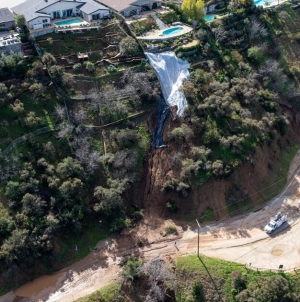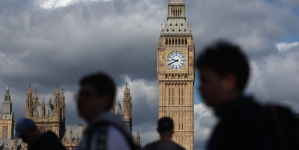-
Crews at Site of Bridge Collapse Work on Removing First Piece of Debris - March 31, 2024
-
A portion of Mulholland Drive, damaged by mudslides in winter storms, reopens - May 26, 2024
-
‘Maybe You Don’t Want to Win’ - May 26, 2024
-
Donald Trump Putting Law Enforcement in Danger: Attorney - May 26, 2024
-
Avoid the waters of these 5 L.A. County beaches this holiday weekend, public health officials say - May 26, 2024
-
Bawdy Comedy ‘Anora’ Wins Palme d’Or at Cannes Film Festival - May 26, 2024
-
Map Shows Heat Wave Zone Spread Into Five New States - May 26, 2024
-
Azusa police arrest suspected slingshot-wielding vandal - May 25, 2024
-
Donald Trump Hammers Judge Ahead of Jury Instructions - May 25, 2024
-
Sometimes U.S. and U.K. Politics Seem in Lock Step. Not This Year. - May 25, 2024
Crews at Site of Bridge Collapse Work on Removing First Piece of Debris
Crews in Baltimore on Saturday were working on pulling the first piece of wreckage out of the water after the collapse of the Francis Scott Key Bridge, a tangible sign of progress in the daunting effort to reopen the busy waterway.
Rear Adm. Shannon Gilreath of the U.S. Coast Guard said at a news conference that his crew was aiming to lift the first segment of the bridge “just north of that deep draft shipping channel.” He added, “Much like when you run a marathon, you’ve got to take the first few steps.”
The bridge was a critical transportation link to one of the largest ports in the United States, and the collapse is costing the region and the country millions of dollars the longer it is out of operation. More than 8,000 workers on the docks have been directly affected, Gov. Wes Moore of Maryland said.
Mr. Moore said cutting up and removing the north sections of the bridge “will eventually allow us to open up a temporary restricted channel that will help us to get more vessels in the water around the site of the collapse.”
Officials overseeing the cleanup added on Saturday that salvage teams will use gas-powered cutters to systematically separate sections of the steel bridge, which will then be taken to a disposal site.
The work was occurring less than a week after a giant container ship known as the Dali suffered a complete blackout and struck the bridge, killing six construction workers and bringing the bridge down into the Patapsco River.
The remains of two of the men have been recovered, but the search for the others who were presumed dead ended after officials concluded that the conditions were too dangerous for divers to try to find them.
On Saturday, Mr. Moore said officials have not forgotten about searching for the missing victims, all immigrants from Mexico and Central America. “As soon as those conditions change,” the appropriate authorities have assured him, “those rescue divers will be going right back in the water.”
The disaster has cast a particularly dark cloud over the growing Hispanic community in and around Baltimore, where communities such as Highlandtown, Dundalk and Glen Burnie have been transformed by waves of immigrants from Latin America. All of the victims had taken the often perilous job of fixing potholes and maintaining the bridge.
The authorities, relatives and advocacy groups that cater to the Latino community have identified at least five of the victims: Jose López, who was in his 30s; Alejandro Hernandez Fuentes, 35, of Baltimore; Dorlian Ronial Castillo Cabrera, 26, of Dundalk, Md.; Miguel Luna, who was in his 40s and from El Salvador; and Maynor Yasir Suazo Sandoval, who was in his 30s and from Honduras.
The bodies of Mr. Fuentes and Mr. Cabrera were recovered on Wednesday, the authorities said.
Mr. Moore took a moment on Saturday to address the families of the victims in Spanish. “They are in our hearts. They are in our thoughts, today and forever,” he said.
Standing not far from the wreckage, Mr. Moore repeated on Saturday that state and federal officials faced a long road to recovery. But he said that at least 377 people were working as part of the recovery operation, and that the pace of the round-the-clock project would increase in the coming days.
“We are going to move as fast as possible,” he said.
Anna Betts contributed reporting.































